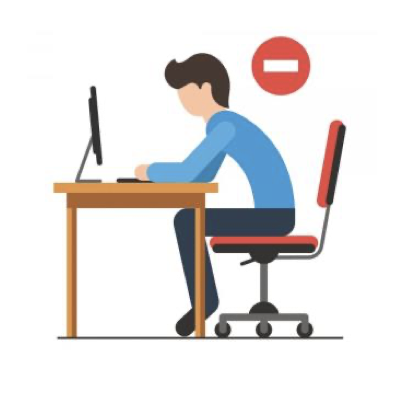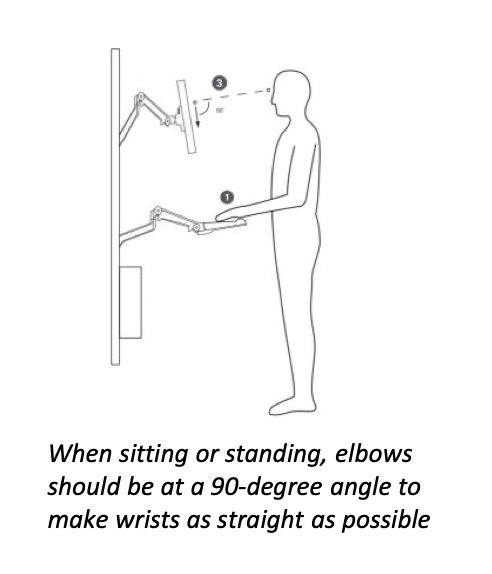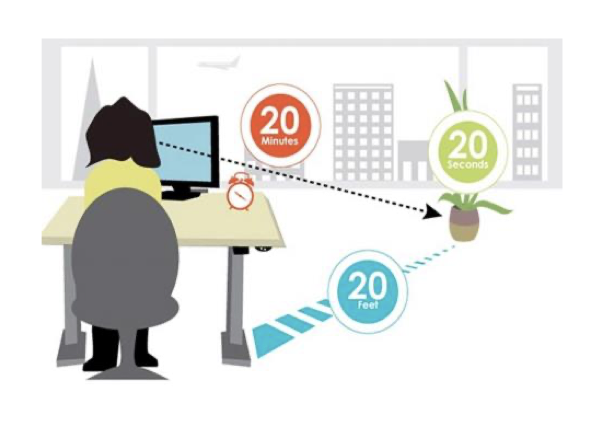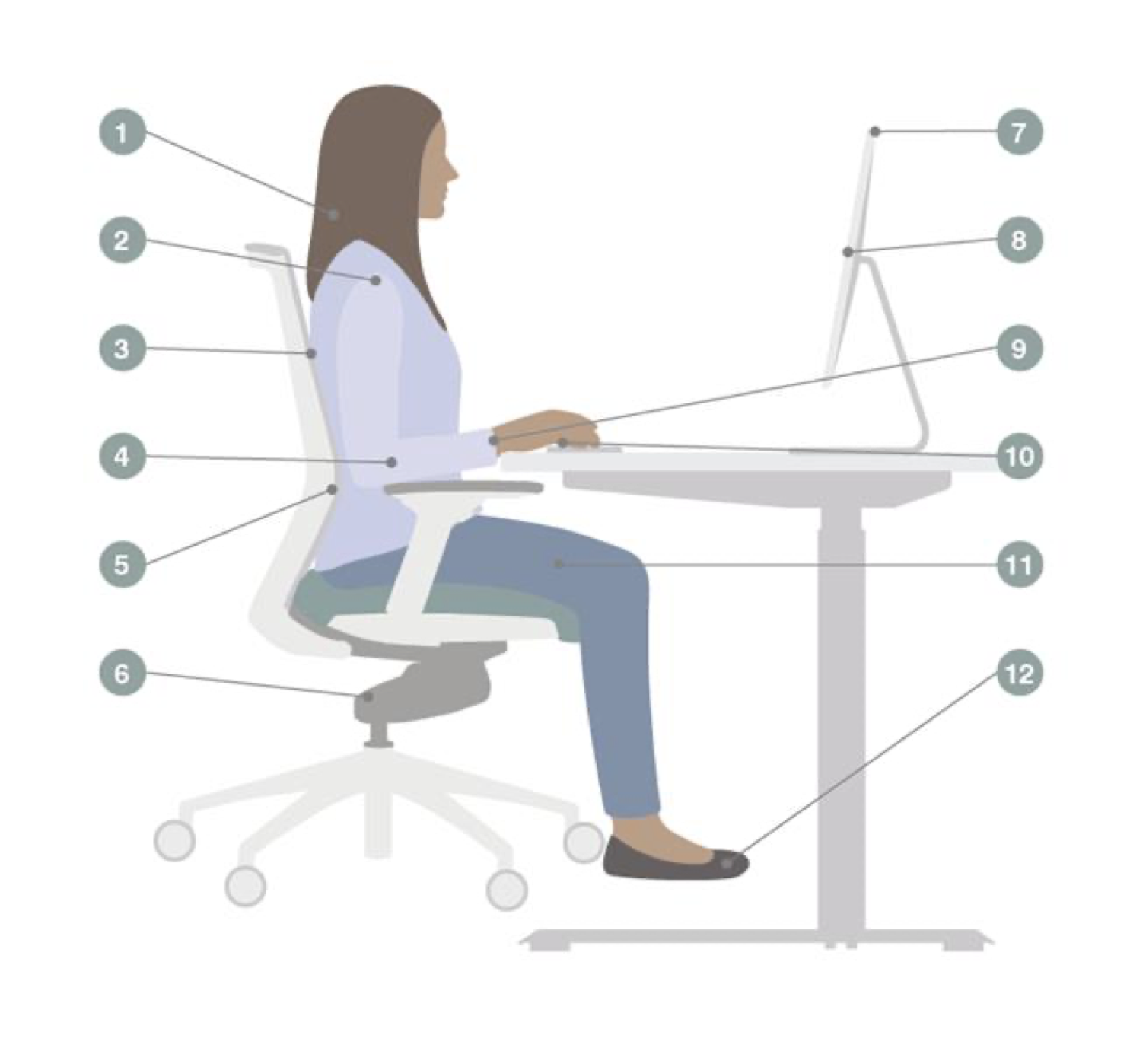Ergonomics Dos and Don’ts for Those Now Working from Home
Information from April 1, 2020 Boston University Publication
 DON’T hunch over your laptop
DON’T hunch over your laptop
It’s easy to work on your laptop for a few hours on the weekend but doing so for 40-plus hours a week can lead to back, shoulder, and neck strain. If you can, use an external monitor or laptop stand (with an external keyboard and mouse) to prop up your screen. When looking at the screen, your eye line should be level with the address bar on your web browser.
DON’T turn your couch into a workstation
As tempting as it is, the couch is not an optimal place to work at your computer for the entire day. Although it may be comfortable, having your legs or full body in a vertical position can lead to muscle numbness and discomfort.
DO customize a space to fit you
Try to set up a workstation that you can make entirely your own. Sharing a workstation means you need to adjust your computer height, chair, and furniture every time you sit down. Often, you may choose to skip adjusting the workstation altogether. If you are the only person using the space, customizing will reduce the time and discomfort of sitting at a station that does not fit you.
 DO work at an appropriate height
DO work at an appropriate height
Find a working height so that your elbows naturally fall flush with your table/desk height. This will promote better wrist alignment rather than impingement or carpal tunnel stress.
DO use an office chair if possible
Adjustable features on an office task chair will save you from lumbar and neck discomfort.
DON’T skip lunch and make sure you stay hydrated
It’s easy to snack throughout the day instead of eating like you did in the office. Making a meal and staying hydrated gives you the opportunity to stand up, walk around, and let your eyes have a rest from the computer screen.
 DO follow the 20/20/20 rule
DO follow the 20/20/20 rule
For every 20 minutes spent looking at a computer screen, you should spend 20 seconds looking at something else 20 feet away. This gives your eye muscles a break and helps reduce eye strain.
DO make sure you get up and walk around
The goal is to get in as many steps as possible during the day, even if you are at home.
To maximize comfort and wellbeing, keep these posture tips in mind:
- Neck is straight and head is evenly balanced
- Relax shoulders so arms hang naturally and close to your body
- Back has full contact with the backrest (sit all the way back in your chair)
- Rest elbows and forearms comfortably on the arms of the chair, without bearing weight
- Use a pillow or roll a towel to provide lumber support
- Adjust the height of your chair to accommodate your worksurface height
- Top of monitor is at eye level or slightly lower and directly in front, so head is not turned
- Monitor should be at least an arm’s length away
- Forearms should be at a 90-110 degree angle to the floor
- Wrists should be straight when typing, not bent up or down
- Thighs are parallel to the floor
- Feet are flat on the floor or on a footrest

